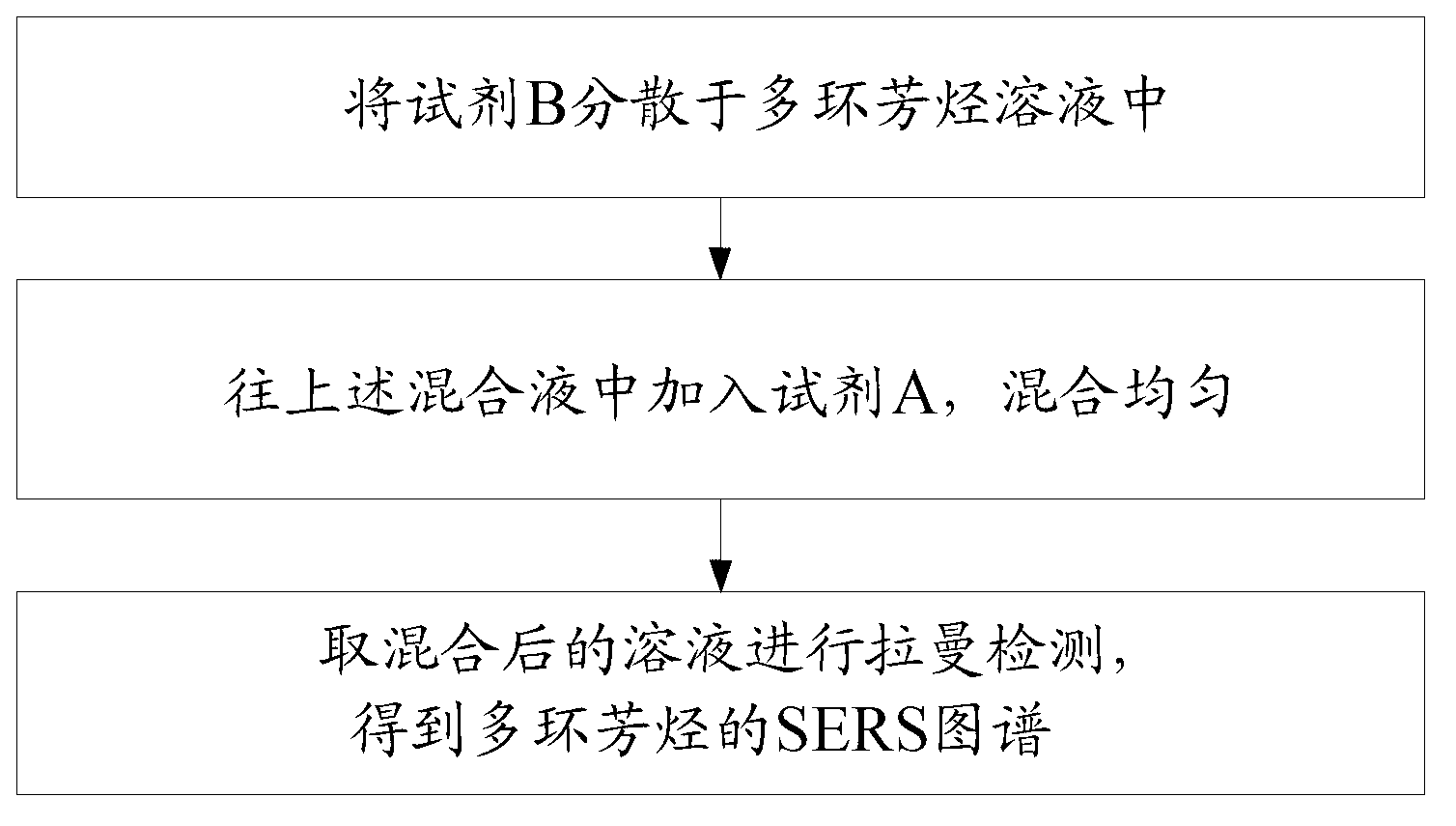Water body polycyclic aromatic hydrocarbon detection reagent and application thereof
A technology for polycyclic aromatic hydrocarbons and detection reagents, which is applied in the field of detection reagents for polycyclic aromatic hydrocarbons in water, can solve problems such as increased hydrophobicity, difficulty in stably dispersing aqueous solutions, and limited applications, and achieves ultra-sensitive detection, improved enrichment capacity, and high sensitivity. Effect
- Summary
- Abstract
- Description
- Claims
- Application Information
AI Technical Summary
Problems solved by technology
Method used
Image
Examples
Embodiment 1
[0038] (1) Measure 20ml10 -2 M AgNO 3 solution, 59ml of deionized water, 1ml of graphene oxide solution, mixed and ultrasonicated for 15min at room temperature, and transferred to a three-necked flask;
[0039] (2) heating the above solution to 90°C while stirring, adding 20ml of 1% trisodium citrate solution rapidly, and continuing the reaction for 24h;
[0040] (3) washing and separating after the above-mentioned reactants are naturally cooled to room temperature to obtain graphene / nano-Ag composites with excellent surface-enhanced Raman effect;
[0041] (4) redispersing the graphene / nano-Ag composite obtained in step (3) in water, the concentration is 0.01M (in terms of silver content), to obtain reagent A;
[0042] (5) Mix the aqueous solution of pyrene with reagent B (CTAB) with a concentration of 2 mg / ml, wherein the concentration of pyrene after mixing is 10 -4 M, the concentration of CTAB was 0.2 mg / ml, and then 100 μL of reagent A was added to mix and sonicate for ...
Embodiment 2
[0044] (1) Measure 20ml10 -2 M AgNO 3 solution, 59ml of deionized water, 0.5ml of graphene oxide solution, mixed and sonicated for 15min at room temperature, and transferred to a three-necked flask;
[0045] Steps (2)-(4) are identical with embodiment (1);
[0046] (5) Mix the aqueous solution of perylene with reagent B (TTAC) with a concentration of 2 mg / ml, wherein the concentration of perylene after mixing is 10 -6 M, the concentration of TTAC was 0.4 mg / ml, and then 100 μL of reagent A was added to mix and sonicate for 30 minutes. When preparing the test sample, draw 10 μL of the above solution and drop it on the cleaned glass slide for Raman detection (excitation wavelength is 532 nm), such as image 3 As shown, distinct peaks characteristic of perylene can be observed.
Embodiment 3
[0048] (1) Measure 20ml10 -2 M HAuCl 4 solution, 59ml of deionized water, 1ml of graphene oxide solution, mixed and ultrasonicated for 15min at room temperature, and transferred to a three-necked flask;
[0049] (2) The above solution was heated to 100°C while stirring, and 20ml of 1% glucose solution was added rapidly, and the reaction was continued for 24h;
[0050] Step (3)-(5) is identical with embodiment (1), as Figure 4 As shown, distinct peaks characteristic of pyrene can be observed.
PUM
| Property | Measurement | Unit |
|---|---|---|
| Concentration | aaaaa | aaaaa |
Abstract
Description
Claims
Application Information
 Login to View More
Login to View More - R&D
- Intellectual Property
- Life Sciences
- Materials
- Tech Scout
- Unparalleled Data Quality
- Higher Quality Content
- 60% Fewer Hallucinations
Browse by: Latest US Patents, China's latest patents, Technical Efficacy Thesaurus, Application Domain, Technology Topic, Popular Technical Reports.
© 2025 PatSnap. All rights reserved.Legal|Privacy policy|Modern Slavery Act Transparency Statement|Sitemap|About US| Contact US: help@patsnap.com



